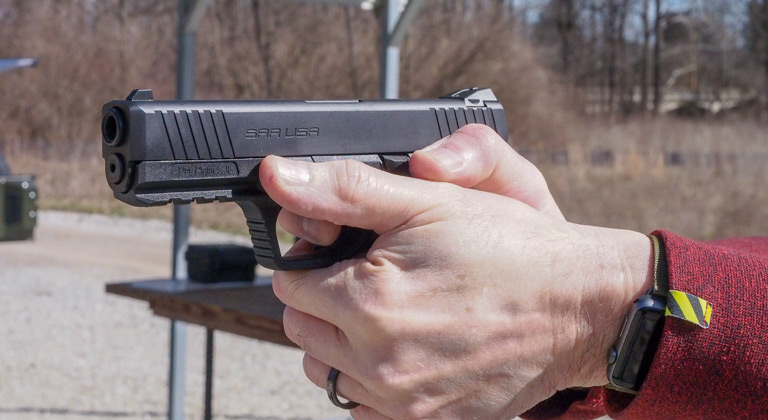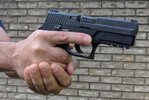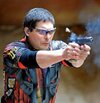Bulletski
Member
It never ceases to amaze me how many people hold and are taught to hold an auto pistol with the fingers of the support hand wrapped around the fingers of the gun hand.
When I took the CCP course some years ago, the instructor who had been in some kind of military Ranger unit showed us that the support hand was to be held flat and the gun hand to be placed on top of it.
He used the analogy of a baseball mit with the gun hand being the ball.
I've used this method since then and find it to be much better than the conventional way which doesn't really support the gun hand but just holds onto it. In his way, the support hand takes weight off of the gun hand, and to me is a lot more comfortable and practical.
Another practical aspect of his way is that it keeps the thumb of the support hand away from the slide. I see so many pictures using the "conventional" way where the thumb is sticking up next to the slide which can come in contact with the slide when the gun is fired resulting in "slide bite" which isn't fun.
Anyway, if anyone wants to chime in on this
When I took the CCP course some years ago, the instructor who had been in some kind of military Ranger unit showed us that the support hand was to be held flat and the gun hand to be placed on top of it.
He used the analogy of a baseball mit with the gun hand being the ball.
I've used this method since then and find it to be much better than the conventional way which doesn't really support the gun hand but just holds onto it. In his way, the support hand takes weight off of the gun hand, and to me is a lot more comfortable and practical.
Another practical aspect of his way is that it keeps the thumb of the support hand away from the slide. I see so many pictures using the "conventional" way where the thumb is sticking up next to the slide which can come in contact with the slide when the gun is fired resulting in "slide bite" which isn't fun.
Anyway, if anyone wants to chime in on this



 But if you must, have this technique in your inventory of skills.
But if you must, have this technique in your inventory of skills.


